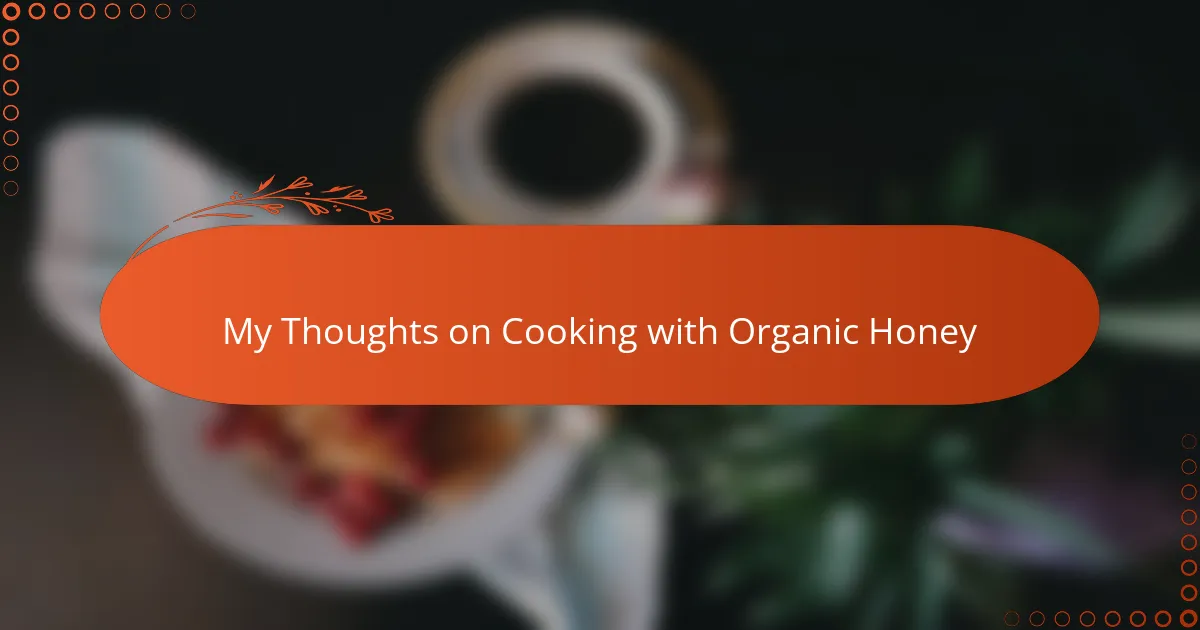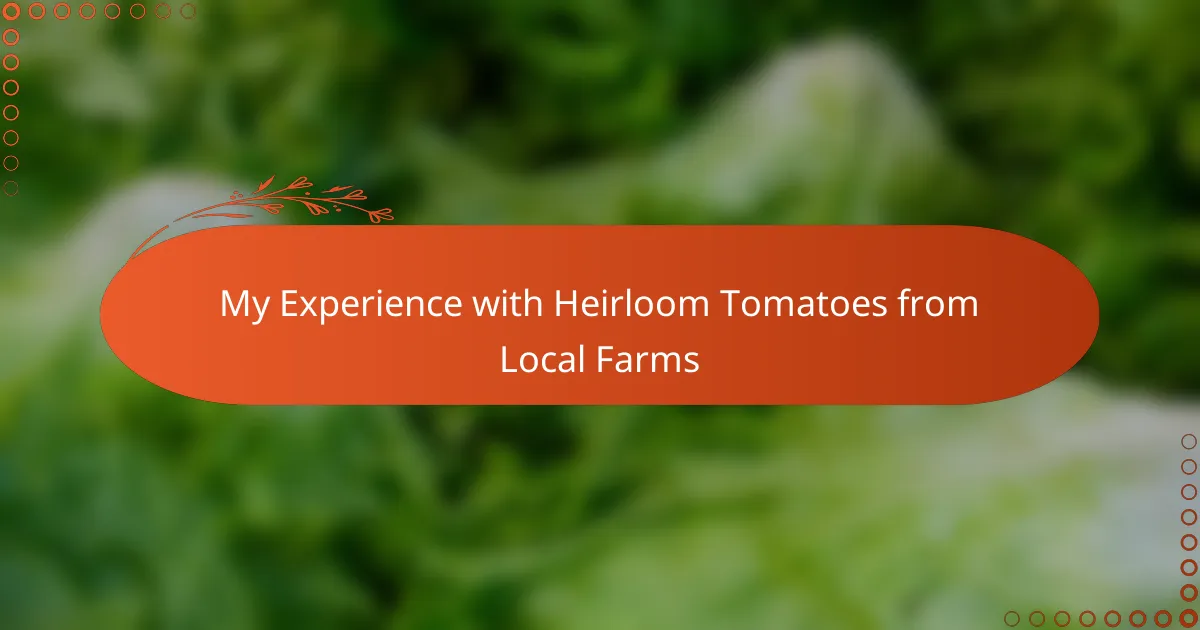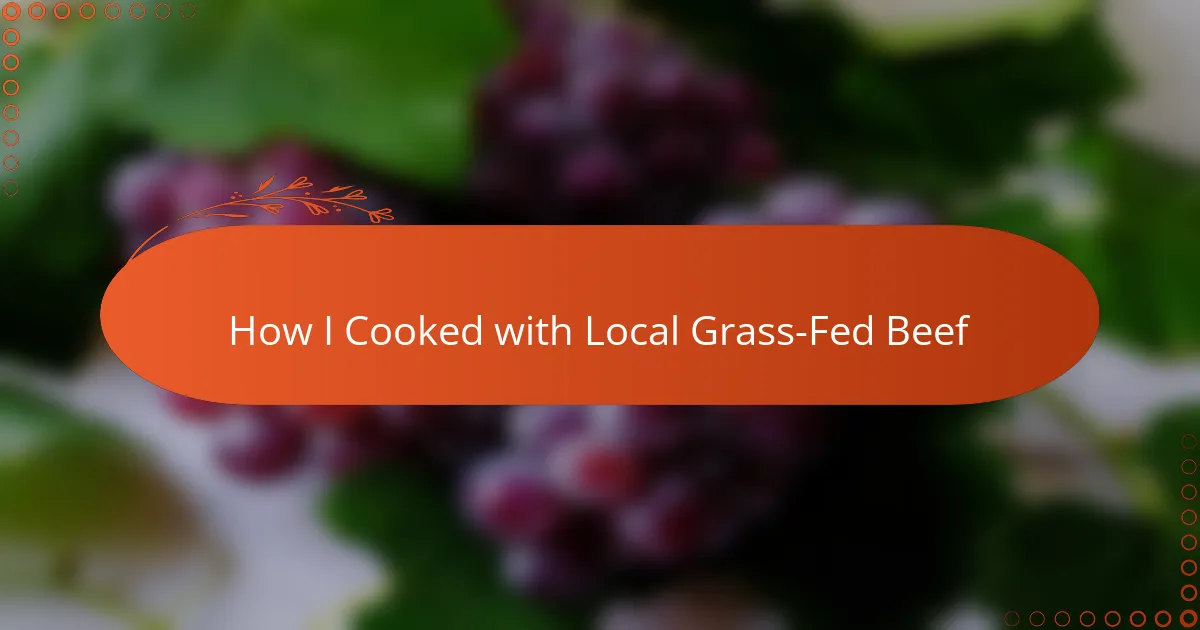Key takeaways
- Organic honey enhances flavor, provides health benefits, and supports sustainable agricultural practices.
- Selecting quality organic honey involves checking certifications, texture, and color, while building relationships with local beekeepers is rewarding.
- Incorporating organic honey into recipes adds natural sweetness and depth, making both sweet and savory dishes more enjoyable.
- Adjustments in cooking and storage are key to preserving organic honey’s flavor and quality.
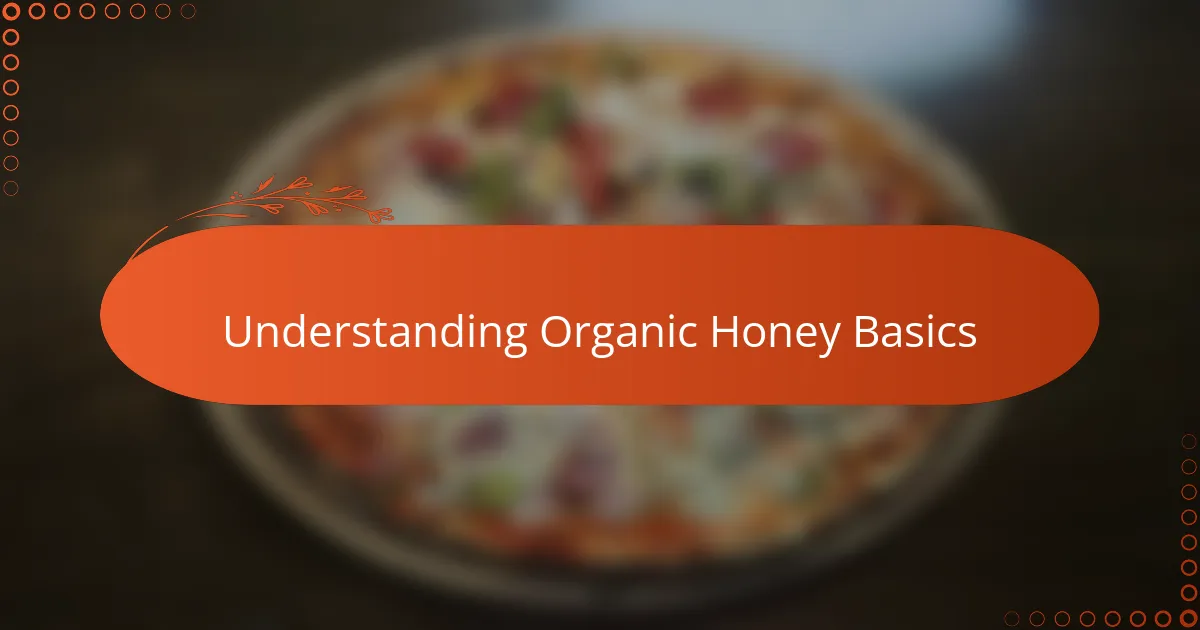
Understanding Organic Honey Basics
When I first started using organic honey in my kitchen, I quickly realized it’s more than just sweet syrup. Organic honey comes from bees that gather nectar from plants grown without synthetic pesticides or fertilizers, which means what you’re tasting is genuinely pure and natural. Have you ever noticed how the flavor of organic honey can vary depending on the flowers in bloom? That diversity adds a unique touch to every dish I make.
What I truly appreciate about organic honey is the connection it creates between my cooking and nature. It reminds me that our ingredients have stories and environments behind them, which makes me value the whole process more. Do you ever feel that using organic products brings a deeper satisfaction to your meals, beyond just taste?
Understanding the basics of organic honey made me more mindful about where my food comes from and how it’s produced. It’s fascinating to me that something as simple as honey can be a small act of supporting sustainable farming and healthier ecosystems. Isn’t it rewarding to know that your cooking choices can make a positive impact?
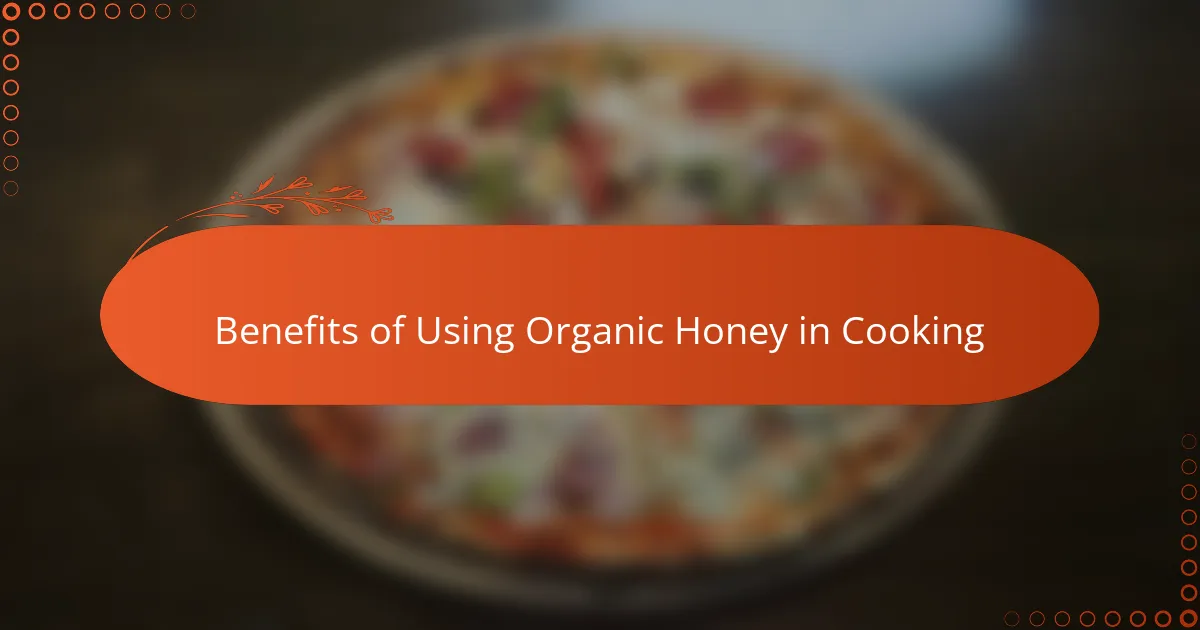
Benefits of Using Organic Honey in Cooking
One of the biggest benefits I’ve noticed when cooking with organic honey is how it enhances the natural flavors of my dishes without overpowering them. Its subtle complexity adds depth, whether I’m drizzling it over roasted vegetables or stirring it into a marinade. Have you ever experienced how a little sweetness can transform a meal from ordinary to exceptional?
Beyond taste, using organic honey feels like a healthier choice for me. Since it’s free from synthetic chemicals, I feel confident that I’m nourishing my family with something purer and closer to nature. It’s comforting to know that what I’m adding to my recipes isn’t just good for flavor, but also for wellbeing.
I also appreciate the versatility organic honey brings to cooking. It’s perfect as a natural sweetener but also lends itself well to balancing acidity in dressings or glazing meats. For me, cooking with it has opened up a new world of creative possibilities—how often do you find an ingredient that’s both delicious and so adaptable?
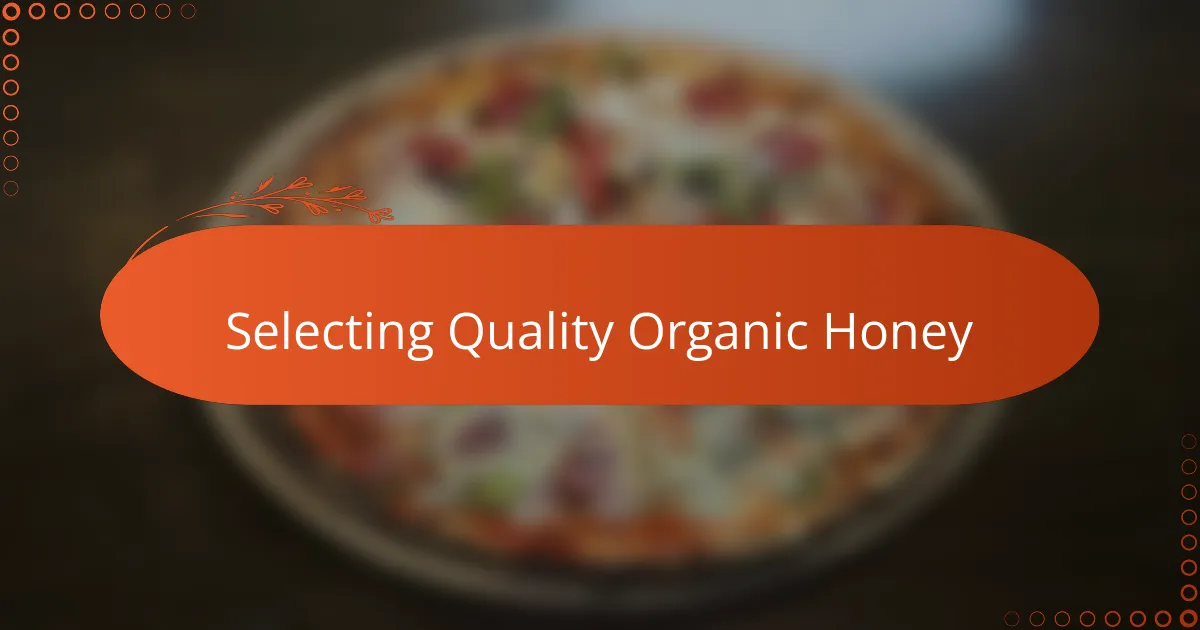
Selecting Quality Organic Honey
When I first started selecting organic honey, I realized that not all bottles labeled “organic” are created equal. I learned to look for certifications from reputable organizations, which reassured me that the honey truly comes from bees foraging in pesticide-free environments. Have you ever felt uncertain walking down the aisle, wondering if the honey you pick is genuinely organic or just marketing?
I also pay close attention to the texture and color of the honey as clues to its quality. In my experience, quality organic honey often has a rich, natural aroma and sometimes crystallizes over time—a sign it hasn’t been heavily processed. It’s fascinating how these little details tell a story of care and authenticity behind each jar.
What’s been most rewarding, though, is building relationships with local beekeepers whenever possible. Buying directly from them not only supports small farms but also lets me ask questions about their practices. Don’t you think food tastes better when you know the hands that helped create it?
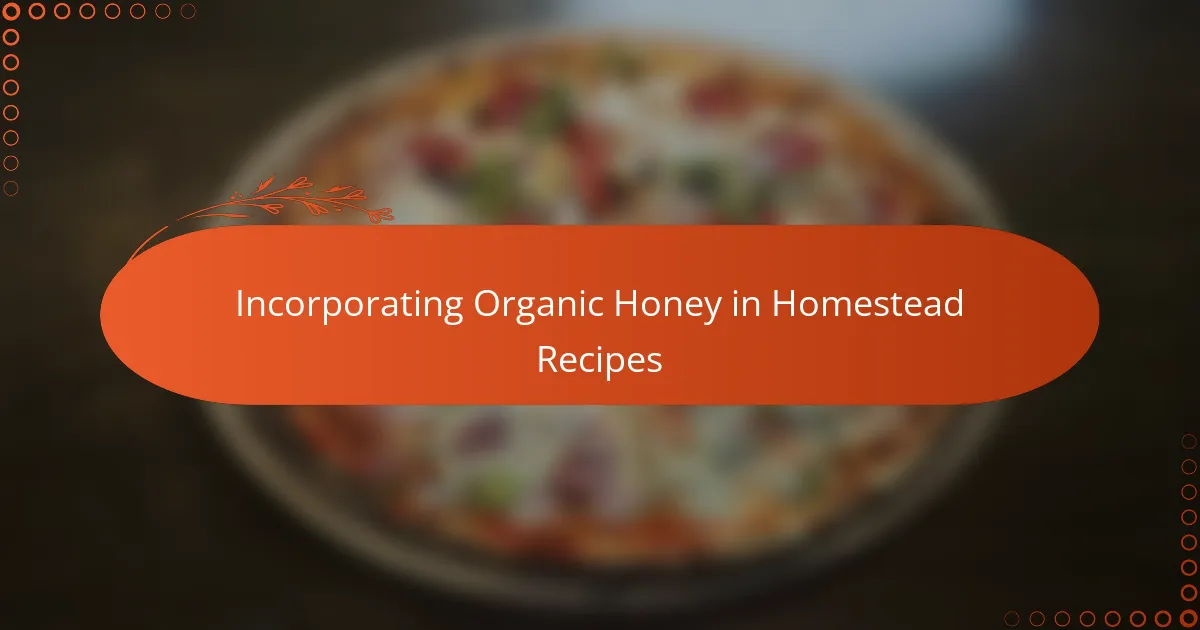
Incorporating Organic Honey in Homestead Recipes
Incorporating organic honey into my homestead recipes has been a game-changer. I often swap out refined sugars for honey in baking, and the way it subtly mellows and enriches the flavors never ceases to surprise me. Have you ever noticed how honey brings a warmth to breads and muffins that just can’t be replicated?
I also love experimenting with honey in savory dishes. Drizzling it over roasted root vegetables or blending it into salad dressings adds that perfect touch of natural sweetness, balancing flavors beautifully. It makes me wonder – why settle for plain when a bit of honey can elevate a simple meal into something special?
What really draws me to organic honey is the sense of connection it fosters between my cooking and the land I tend. Using it feels like inviting a little piece of the meadow onto my plate, carrying the essence of wildflowers and sunshine into every bite. Don’t you think food prepared with that kind of story tastes richer?
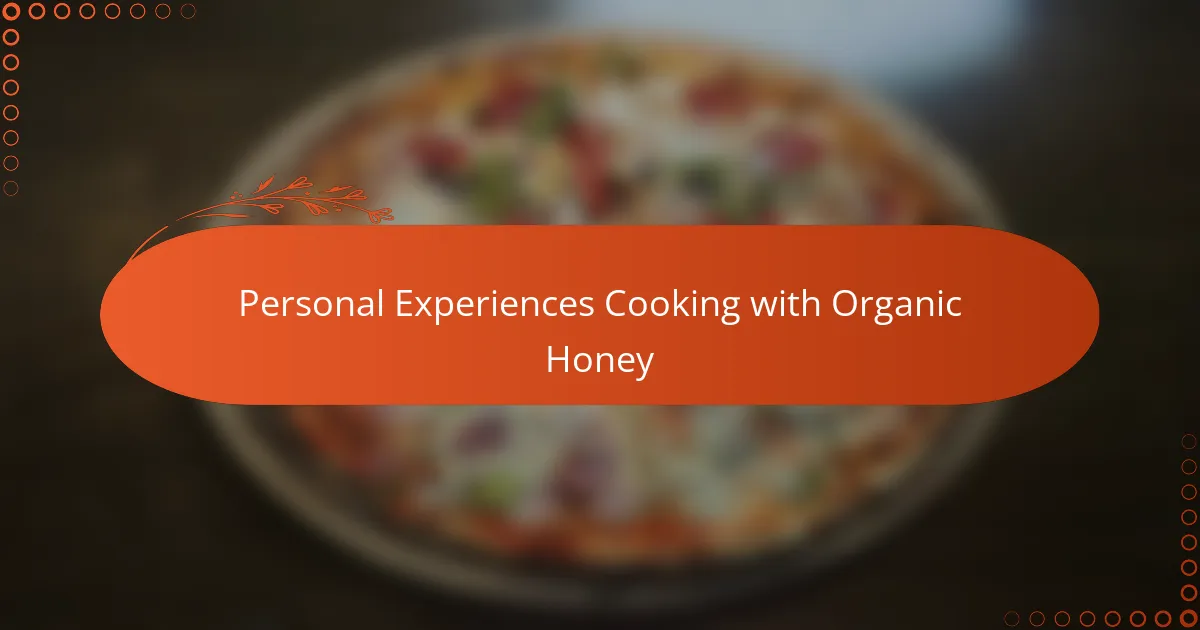
Personal Experiences Cooking with Organic Honey
Cooking with organic honey has been a delightful journey for me. I remember the first time I swapped out white sugar for organic honey in a simple glaze for roasted carrots—it added this delicate, floral sweetness that felt so natural and comforting. Have you ever noticed how such a small change can make a familiar dish feel entirely new?
Sometimes, I find that organic honey brings a kind of warmth and cohesion to a recipe that’s hard to describe but easy to appreciate. For example, when I stirred a spoonful into my homemade yogurt, it transformed the flavor from plain to pleasantly complex, making snack time feel like a little celebration. Isn’t it amazing how something so simple can enrich everyday moments?
What stands out most to me is the peace of mind I get knowing I’m cooking with an ingredient that’s pure and responsibly sourced. When I drizzle organic honey over my morning oatmeal, I’m reminded of the bees’ hard work and the care taken to protect their environment. Doesn’t that connection make each bite taste even sweeter?
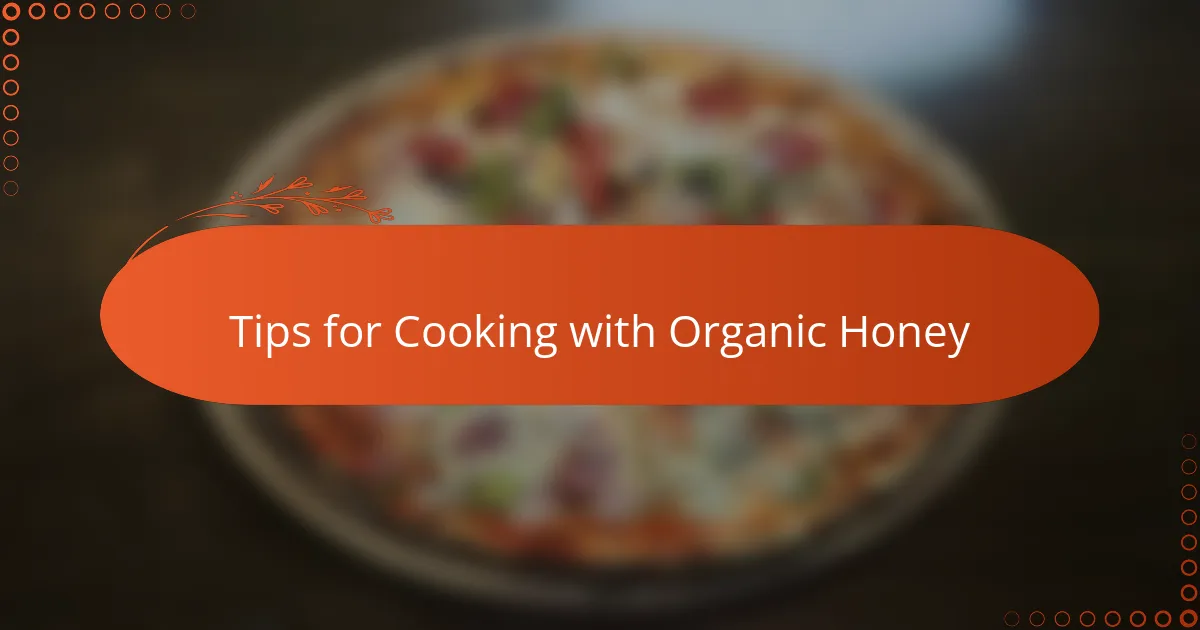
Tips for Cooking with Organic Honey
One of my go-to tips when cooking with organic honey is to remember that heat affects its delicate flavors. I’ve found that adding honey towards the end of cooking preserves its natural aroma and subtle floral notes much better than boiling it from the start. Have you ever noticed how honey loses some of its magic when cooked too long?
I also like to experiment with measurements because organic honey is sweeter and more complex than regular sugar. In baking, I usually reduce other liquids slightly to keep the texture just right. Doesn’t it feel rewarding when adjusting a recipe brings that perfect balance of sweetness and moisture?
Lastly, storing your honey properly matters more than we might think. Keeping it in a cool, dark place helps maintain its quality and prevents crystallization from speeding up. When I see my honey crystallize naturally, I actually take it as a sign of its purity—it’s like a little reminder that I’m working with something truly unprocessed. Have you ever embraced such quirks of real food?
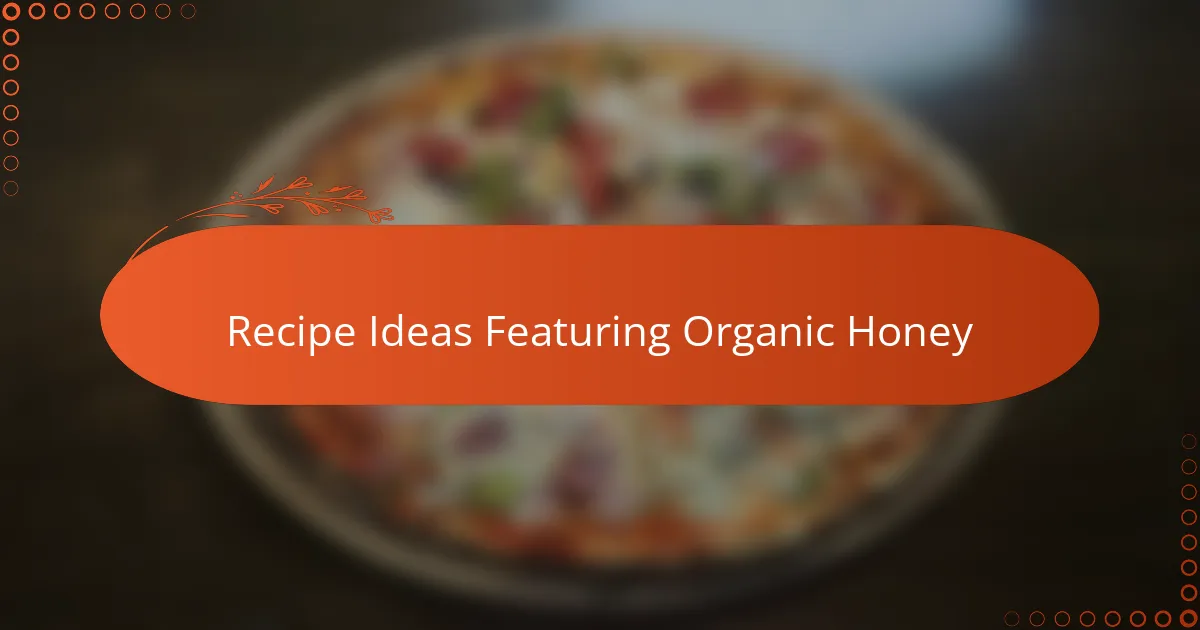
Recipe Ideas Featuring Organic Honey
When I think about recipe ideas featuring organic honey, one of my favorites is a simple honey and mustard glaze for chicken. The honey adds a gentle sweetness that perfectly balances the tang of Dijon mustard, creating a glaze that’s both sticky and flavorful. Have you ever been surprised how such a straightforward pairing can turn an ordinary dinner into something memorable?
Another way I love to incorporate organic honey is in homemade salad dressings. Whisking it together with apple cider vinegar and olive oil makes for a dressing that brightens fresh greens with a soft sweetness. It’s amazing how a drizzle of honey can elevate a salad from bland to vibrant without any fuss.
For baking enthusiasts, swapping out refined sugar for organic honey in recipes like banana bread or oatmeal cookies always feels like a little celebration. The honey not only sweetens but also adds moisture and a subtle floral note that gives each bite a depth you don’t get with regular sugar. Have you tried this substitution? The difference is truly delicious.
